Even as adults we have fears, baseless or not. I know many that leave night lights on in their houses even though they have no kids. More lights surround their homes and remain lit till sunrise.
Fear of what? Stumbling in the dark? That’s a possibility, but how often do you go stumbling out into your yard at 3 in the morning. In the house, you should know where everything is in your path and shouldn’t need light in order to avoid stubbed toes and banged shins. Unless you’re one of those unfortunate human beings that have a spouse with an undying need to rearrange the furniture in the house every single day.
The fear is more of the unknown. What lurks in the dark, behind every tree, every bush. After 54 years I’ve discovered that there’s nothing. Never has been. Nothing has ever jumped out from dark hidden spots. No one is lurking, no one is around.
I can’t get enough of the dark and prefer when I wander out the door after the sun sets to be surrounded by nothing but moon and star light. There are only two lights on poles on our dead end street. One of them is directly in front of the house. I’ve been told that shooting it out with one of my air guns would be considered unacceptable behavior. But who would know. One night it would just be out.
My only fear, the only one I’m aware of, is ice. Walking on ice. Not when it’s adhered to solid ground, but the stuff that sits thinly on water. Unless I know that the water beneath the ice is less than knee deep, I won’t go there. My brain won’t allow it and my legs obey. Based on how many fishing licenses there are in Illinois compared to the few that venture out ice fishing, either more share my justifiable fear of ice or they don’t realize that there is still open water to be found.
Which is my point.
I’ve been wandering around and have forgotten how much open water is out there in spite of the below normal temperatures for the month of December. In the past I’ve fished pretty much all of them. My lack of funds for neoprene waders and my current leaking breathable waders has kept me from venturing out this winter. Will probably curtail those efforts till March. But that doesn’t mean other hearty souls shouldn’t venture out.
The DuPage River tops the list of open water. This includes the West Branch, East Branch and main stem. The stretches I checked out were virtually ice free. I thought I would see more ice along the edges where the current slows or stops, but I saw very little. From Naperville to Plainfield and Shorewood there was plenty of open water for my fellow iceaphobic anglers to ply. I’d like to say the DuPage is open because of it’s spring fed waters, but past knowledge tells me it’s because of the large amounts of treatment plants discharging warmer water. Regardless of why, those willing to put in the time might try finding some of this rivers slower moving sections and give it a try.
Spent time like usual cruising up and down the Fox River from Montgomery to the bridge just above the mouth of Big Rock Creek. Plenty of open areas. Ice covers some of the deeper fish holding spots and the really slow shallow areas are ice locked, but accurate casts that get under the ice cover might be worth the effort. For those that are a little impatient, it would be worth searching out the treatment plants. Their discharges should be flowing at around 55 degrees. I’ve always concentrated on the one between Montgomery and Oswego. You can follow it down for a good quarter of a mile and catch fish, on a good day. But I’ve done well in the past at the ones in St. Charles, Geneva and Batavia as well. They are much smaller areas to fish, but if timed right can still produce.
A couple of weeks ago I mentioned and didn’t name a couple of creeks that feed the Fox that are spring fed and generally free of ice. Those would be Big Rock and Little Rock Creeks.
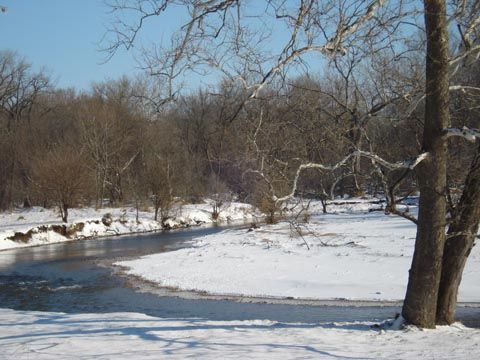
The other creeks that feed the Fox that I’ve checked are all ice locked. Those two are pretty much wide open. This would require some exploring. I know of 4 to 8 foot holes on both where I’ve consistently caught smallies up to 18 inches. I imagine those fish are still there. A bit more lethargic perhaps, but a well placed meal right in front of their face might get eaten.
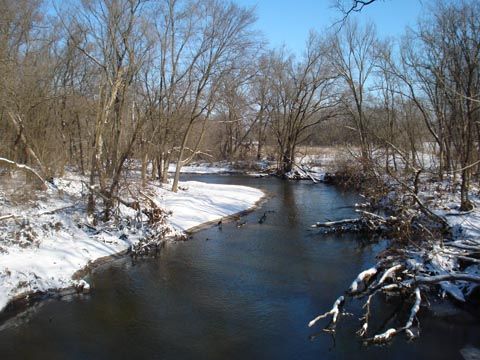
Those holes you’ll have to find on your own though, I’m not feeling all that generous with that information today.
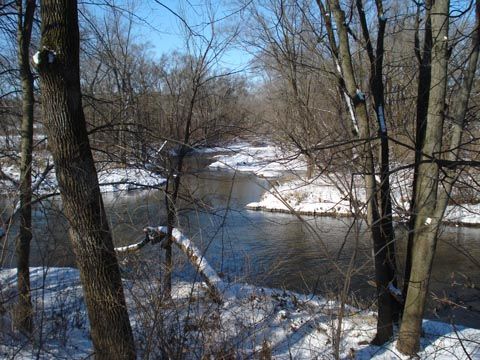
The bonus on the DuPages and the creeks will be Rock Bass. They seem to never stop eating and the colder water seems to have little effect on them.
One of the things I’ve always been impressed by are trout anglers. Small spring fed streams flowing through a winter wonderland of snow and trout anglers out there making an effort to coax these fish to bite. The Legendary, or soon to be Legendary, Cory Yarmuth recently posted just such pictures of steelhead from small creeks. Snow, cold, open water and steelhead. Why walk on ice when you can do that?
Astute anglers and ones that actually know how to read maps will also know where to go on the DuPages for rainbow trout. Yes, if you’re lucky these fish can be found. It requires a minimum amount of research and a fair amount of physical effort, but it can be done.
What to use to coax any of these fish from these colder waters can really vary. A float with just about anything under it might work. A fly, something live on a hook, a piece of plastic, but past experience tells me the closer to the bottom the better. You can skip the float and just go with something live, split shot and a hook sitting on the bottom. You can skip the live bait all together, but you still want it on the bottom. 3 to 4 inch black finesse worms might work. Small twisters perhaps. The trick is slow, not moving much slow.
And then there are those that might be lucky enough to live far enough south that their lakes never freeze. They might get an edge of ice along the shore of the lake, but that could easily be broken and a boat taken out to open water. I used to go fishing in Virginia quite often, but never during the winter. A friend lives their and goes fishing year round. He would go out in a canoe, these are small lakes of less than 30 acres, and troll deep diving crankbaits back and forth across the lake. The electric trolling motor would take him back and forth at less than a walking pace. For those that need to know these things, that’s less than 3 miles per hour. He would make sure that his crankbait would get down to within a foot of the bottom.
For his efforts he wouldn’t catch a lot of fish, but he would consistently catch his biggest fish of the year. The biggest he ever told me about was a 12 pound largemouth, in January.
The place I used to go to in Virginia is as far south as southern Illinois. I would imagine there are lakes in southern Illinois that behave likes those I used to fish in Virginia. I would imagine this same technique would work in any open winter water. I’ve never read about anyone doing this before. If so, let me know. I’m curious. If any give this a try after reading this, let me know. I might move there. I like southern Illinois.
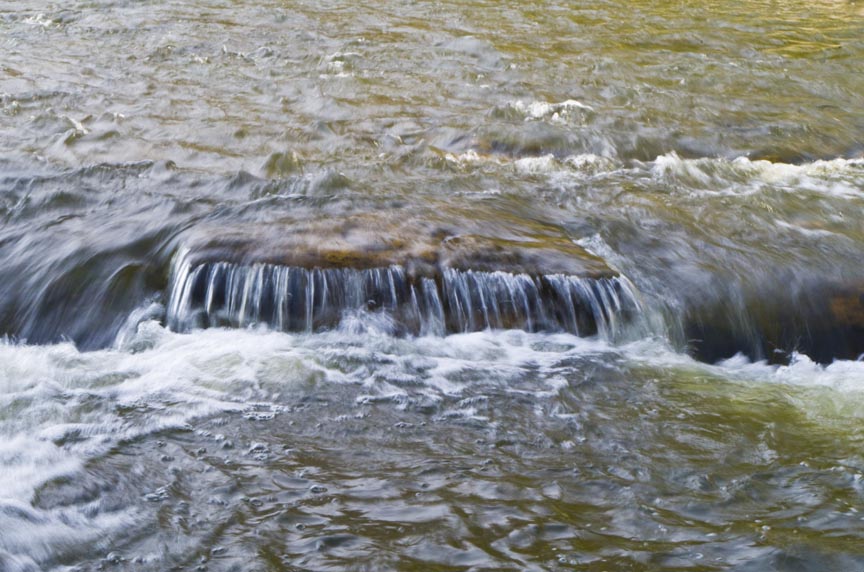
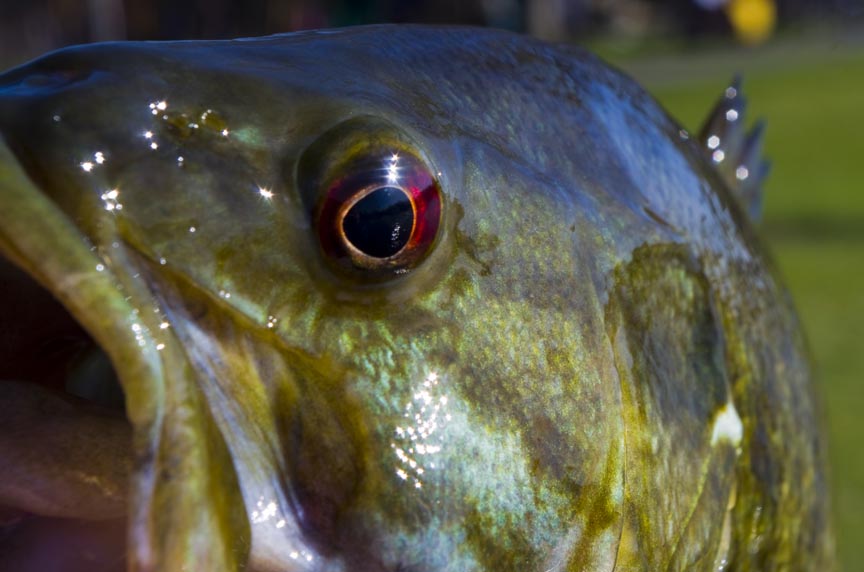
Pingback: Dear Mr. Bowman «
Pingback: Put Your Money Where Your Mouth Is «
Pingback: Fox River Report . . . or Lament «